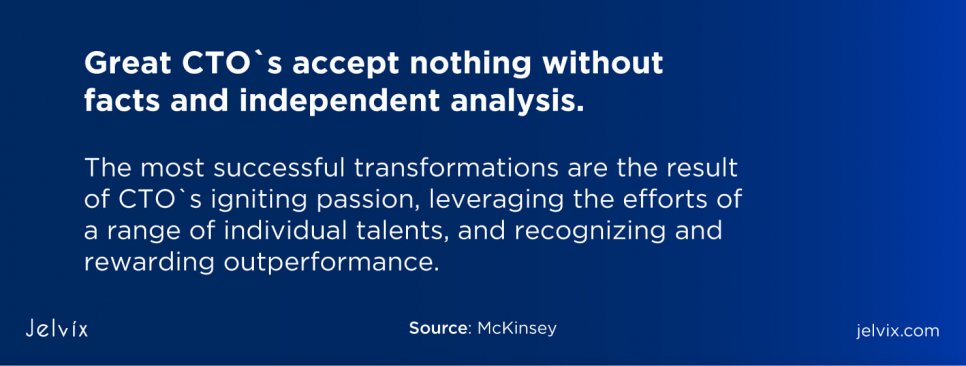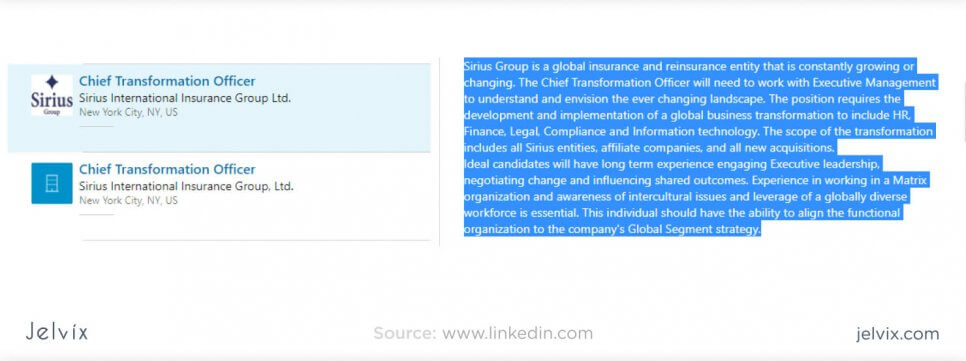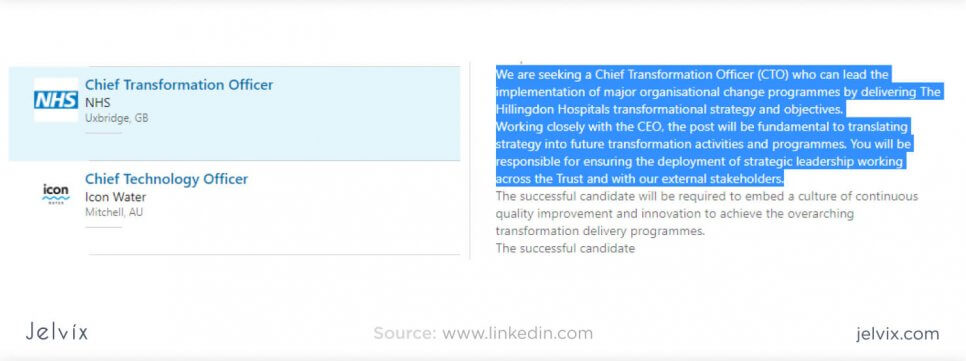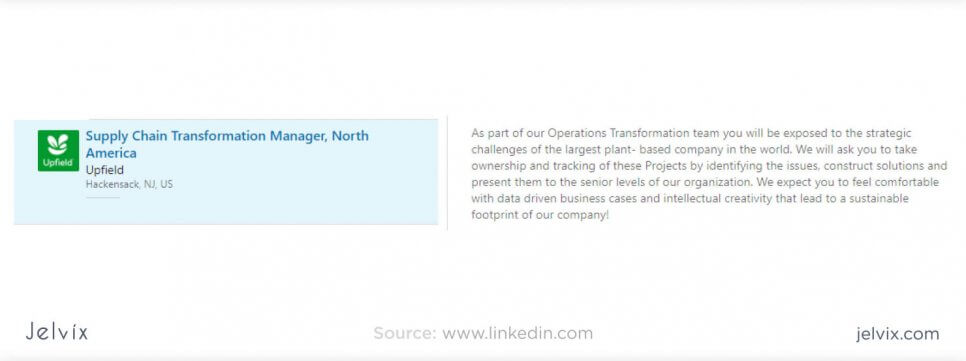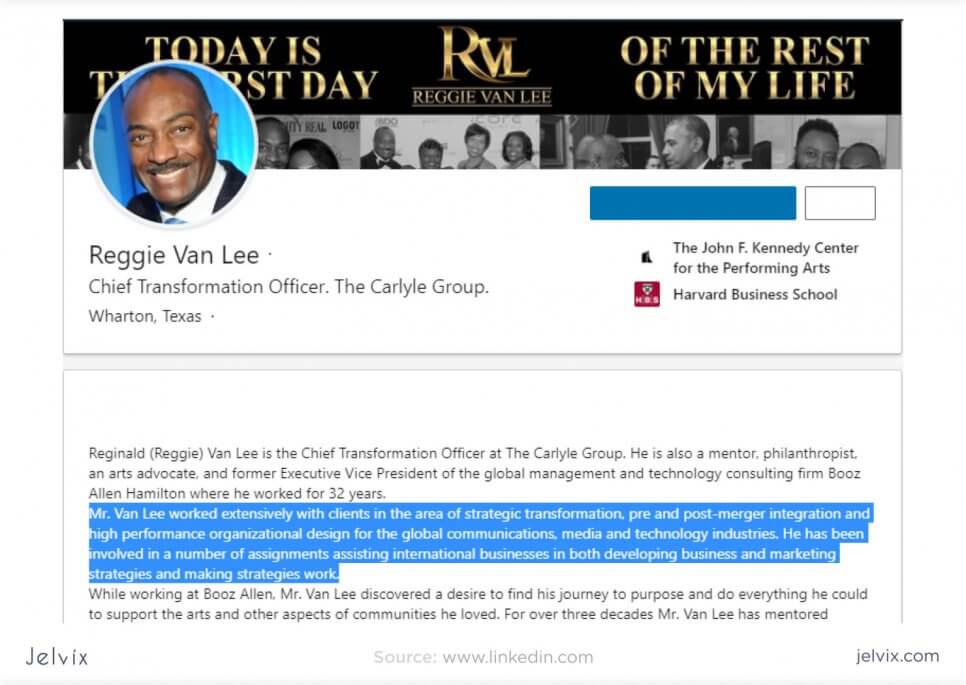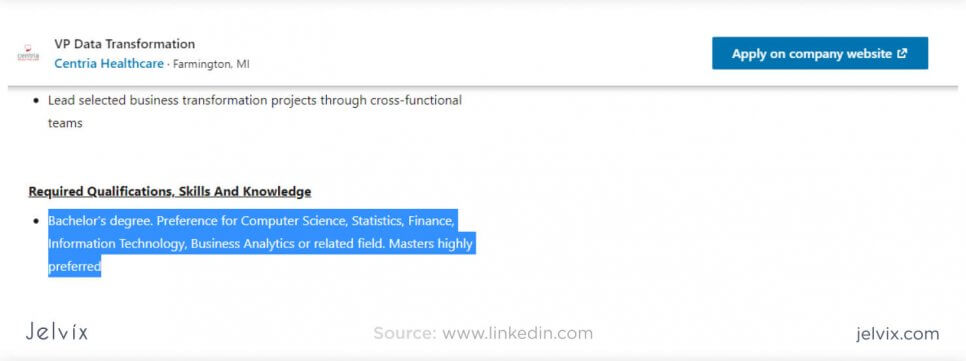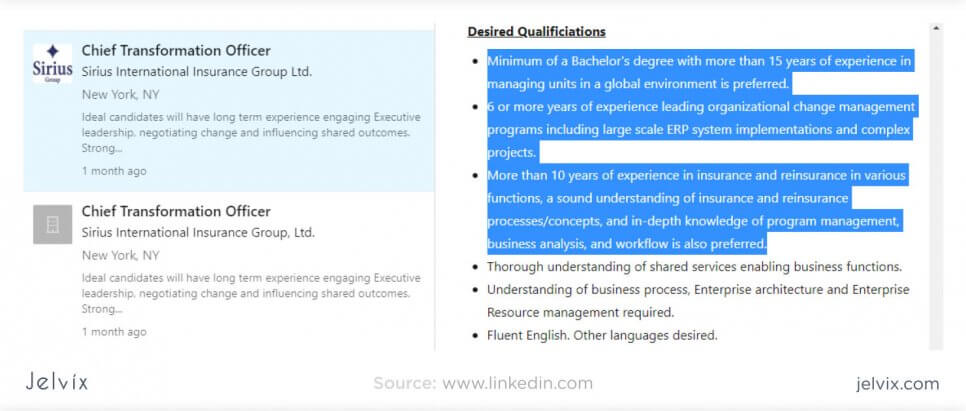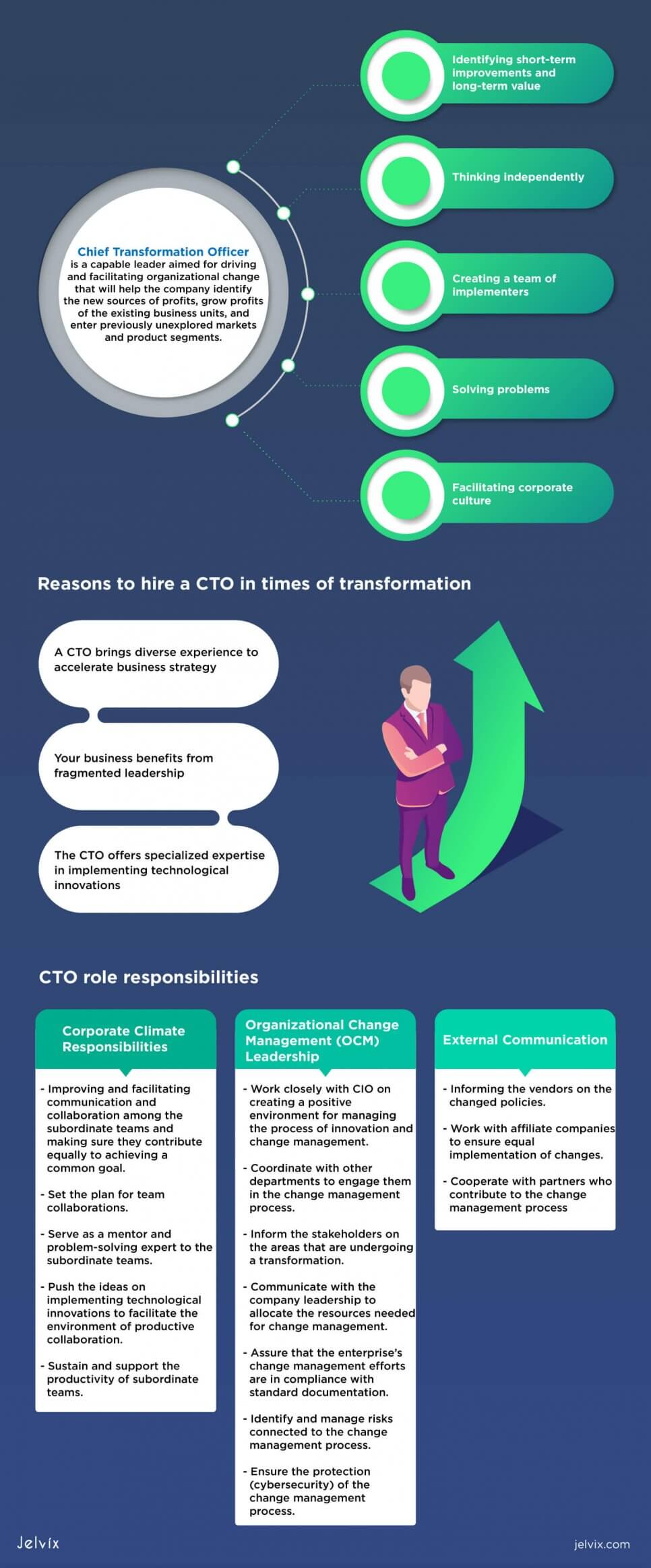When you think that your company is ready for a change, you need to do things right. This means that change should start from the leadership, with the introduction of a Chief Transformation Officer.
Bringing a CTO into Your Company: UPS’s Experience
Back in 2017, UPS hired Scott A. Price, a former Executive Vice President of Walmart Global, as a Chief Transformation Officer. UPS’s new CTO position was driven by the need to increase their global presence and grow international profits.
As a CTO, Mr. Price is now responsible for driving and facilitating organizational change that will help the company identify the new sources of profits, grow profits of the existing business units and enter previously unexplored markets and product segments.
What are the results of his work? As of today, Mr. Price is responsible for technological transformation in UPS. Among his achievements is UPS’s well-known drone delivery service.
UPS drone delivery – a project introduced by the UPS CTO- is among a few air delivery projects in the U.S. that the FAA authorizes.
Implementing this innovation allows UPS to deliver packages even to medical and military facilities, making this company one of the game changers in this industry. This is all thanks to the strategy of its CTO.
Reasons to Pass on the Reigns to CTO in Times of Transformation
From UPS’s experience, we can single out the following reasons, why your business would benefit from hiring a CTO during the times of transformation:
1. A CTO brings diverse experience to the table. UPS’s CTO Scott Price previously worked in C-Suite of Coca-Cola in Japan for ten years, helping the company build its international presence in Asia. He was also in a top-management position in DHL and Walmart, responsible for the companies’ global business strategy.
2. Your business benefits from fragmented leadership. Essentially, introducing a CTO means switching to fragmented leadership, where a CEO is not responsible for every transformation that a company undergoes. Instead, the CEO passes these duties to a CTO, who will be responsible for designing and executing the strategy for transformation under the observation of the entire board of top managers.
3. The CTO brings specialized expertise. Scott Price, for instance, focused on implementing technological innovations into UPC’s growth and transformation strategy. Under his leadership, UPS implemented drone delivery and launched a 3-D printing service.
By bringing a CTO to your company, you embrace change as something exciting rather than stressful and recognize transformation as the necessary drive for the sake of growth.
Read more about the most common software development strategies and take a look at their benefits and drawbacks.
CTO Role and Responsibilities
UPS hit the bull’s eye with Scott Price, who brought the experience the company was looking for. When hiring him, UPS already had his role established, and his responsibilities spelled out, which helped them hire the right person for the global expansion strategy and technological transformation.
What does a chief transformation officer do? Let’s examine the role and responsibilities of a CTO and how they differ from business to business.
CTO Role Description
The role of the CTO will depend mostly on the scale of your business as well as the nature of the transformation this person will be responsible for.
For a bigger company, like SiriusPoint International Insurance Corporation, the main focus would be on the CTO’s role as a facilitator of global business transformation that will encompass HR, Finances, Legal, Compliance spheres, and of the implementation of innovations.
Also, in this case, the scope of transformation will be reasonable, as the company has many clients, affiliate companies, and, of course, a larger number of employees for whom the director of transformation will be responsible.
Smaller companies, however, usually focus on the CTO’s role in local or regional development. The same works for regional subdivisions of corporations or government institutions, like NHS:
CTO Responsibilities Round-up
In smaller companies or company subdivisions, a CTO would have a smaller scope of duties, and will usually be responsible for specific areas of transformation, such as working on transforming a chain of hospitals and helping the CEO manage the Trust, like in the case of NHS.
So, as you can see, the definition of the CTO’s role will depend on the scale of your business and the goals you want to achieve with transformation.
There are, however, a few things that every business, regardless of its size and nature, can include in the description of the CTO role:
- Identifying short-term improvements and long-term value. The CTO is responsible for implementing the ideas that will have long-term, transformational effects for the company. Every decision of the CTO should be centered on the big picture and how it will affect the company’s future.
- Thinking independently. This means that a CTO should base its decisions only based on the specifics of the company and the transformations it’s going through. Although a CTO should have vast experience, they shouldn’t rely on it completely.
Every company’s transformation journey is different, so the CTO’s role is to consider the company’s specifics and make decisions that don’t entirely depend on what worked earlier for another company.
- Creating a team of implementers. Generally, the role of the CTO also includes hiring or bringing together a group of employees who would implement the new transformation strategy. That is why many companies require CTOs to have previous experience of leading a department or a company.
- Solving problems. Since a CTO takes responsibility for the transformation strategy, they will also be responsible in case any problems arise. To this part of their role, we should also add CTO’s ability to solve problems solely based on independent analysis and real-world facts.
- Facilitating corporate culture. CTOs, as part of C-suite and top management, are expected to represent, implement, and observe the corporate culture that exists in the organization. As they usually have a large team working with them, the CTO’s role is focused on embodying the corporate culture and serving as an example to the subordinates.
Field-specific CTO Role
The role of the CTO is also focused on achieving tangible results in a particular sphere of company operations. In CTO job descriptions, you can often see that a CTO is usually responsible for certain areas that will undergo transformations, and need relevant experience to do it.
Here’s an example of a similar role of the Supply Chain Transformation Manager at Upfield:
As you can see, the role of the CTO in this job description is defined by the main are of transformation that the CTO at Upfield will work on, and the responsibilities are also related to this area.
CTO Responsibilities
Let’s talk more about responsibilities. Most CTO responsibilities are defined by the nature of the organization that hires the CTO and the nature of the areas that will undergo a transformation.
For instance, Elizabeth Allison, the CTO at Neiman Marcus Group, a chain of luxury department stores, is responsible for transforming the e-commerce segment and the off-price division of the company.
Reggie van Lee, the CTO at The Carlyle Group, an American multinational private equity and financial services corporation, has responsibilities that correspond to the nature of the organization he’s working at, including post-merger integration, global communications, and strategic financial transformation.
Similar to the role of the CTO, their responsibilities will also largely depend on the spheres they will be working on.
However, there are responsibilities that would be similar for all CTO job descriptions. These responsibilities can be subdivided into several groups.
Corporate Climate Responsibilities
- Improving and facilitating communication and collaboration among the subordinate teams and making sure they contribute equally to achieving a common goal.
- Set the plan for team collaborations.
- Serve as a mentor and problem-solving expert to the subordinate teams.
- Push the ideas on implementing technological innovations to facilitate the environment of productive collaboration.
- Sustain and support the productivity of subordinate teams.
Organizational Change Management (OCM) Leadership
- Work closely with the Chief Innovations Officer on creating a positive environment for managing the process of innovation and change management.
- Report on the change management processes to the top management.
- Coordinate with other departments to engage them in the change management process.
- Inform the stakeholders on the areas that are undergoing a transformation.
- Communicate with the company leadership to allocate the resources needed for change management.
- Assure that the enterprise’s change management efforts are in compliance with standard documentation.
- Identify and manage risks connected to the change management process.
- Ensure the protection (cybersecurity) of the change management process.
External Communication
- Informing the vendors of the changed policies.
- Work with affiliate companies to ensure equal implementation of changes.
- Cooperate with partners who contribute to the change management process (e.g., partners that provide cybersecurity, help implement innovative technologies, etc.)
Besides the tasks mentioned above, CTOs are also responsible for creating the learning environment to facilitate change. “One of my tasks as a CTO of an online company is to regularly hold seminars and workshops connected to the upcoming changes in the company,” says Melanie Sovann, a Chief Transformation and Innovation Officer at Subjecto.
Any changes that will affect the entire organization start from within. CTOs need to have a specific background to make them go as expected.
Education and Experience Needed to Get a CTO Position
So, let’s cover the common requirements that a CTO’s background should include that are essential to perform all the above-mentioned tasks.
Education Requirements
Most of the companies, whose open CTO positions were analyzed earlier in this article, require a minimum of a Bachelor’s degree with specializations relevant to the sphere the company operates in:
The required education is mostly a Business degree or an MBA. Companies rarely require additional training or a qualification upgrade, mostly relying on the candidate’s experience in the relevant field.
Work Experience Requirements
The required experience varies from company to company. Large companies like SiriusPoint require a candidate for the CTO position to have at least 15 years of managerial experience, with additional qualifications. Some companies hire CTOs with a minimum of 10 years of experience in the relevant field:
For the position of a CTO, just as for any other top management position, you need to have a minimum of 7-10 years of experience in the relevant industry, and additional years of experience in other spheres relevant to the position.
Apart from the years of experience in change management, companies also list:
- experience in digital transformation
- experience in team management
- experience in crisis and risk management
- experience in running different organizational processes
- experience in enterprise resource management
- experience in corporate presentations
Companies also often list a set of skills they expect their job candidates to have when applying for the position of the CTO.
The Top 6 CTO Skills
Again, as with experience and education, every company has its own requirements concerning the skills that a job applicant should have to get the position of the CTO.
However, many CTO job descriptions often mention the following: hard and soft skills.
Hard Skills
1. Change Management
The CTO’s position is to manage change and facilitate transformation. That’s why change management would be the first hard skill that job applicants are required to have.
Change management is a collective definition for a set of approaches that help prepare the company for changes and support the actions aimed at implementing these changes. The sub-skills that fall into this category are:
- implementation of technology
- process review skills
- crisis management skills
This category also includes skills connected to implementing changes in the organizational structure. “A job candidate for the CTO position should have all the change management skills required to handle acquisitions and mergers,” says Jared Atkins, a CTO at Studyker. Many companies list these skills under ‘organization restructuring’ in their CTO job descriptions.
2. Risk Management
Organizational transformation is closely linked to risks. Thus, a job candidate for the CTO position should have strong risk management skills to be able to handle any obstacles that occur in the process of transformation.
Risk management skills include:
- risk identification
- risk evaluation
- prioritization skills
- problem-solving skills
This category also includes skills that help CTOs allocate the resources necessary to tackle risks and maximize the positive outcome that will facilitate change.
3. Control Skills
This category of hard skills comes as a follow-up to the risk management skills. “A CTO should be able to monitor all the processes connected to change management and hold control measures to prevent the loss of valuable resources,” says Claire Fulmer, a CTO at WriteScout.
Control skills include:
- planning
- delegation
- problem-solving
- finance and operations management
Control skills also include situational awareness and cross-functional background to be able to recognize early risks and prevent them.
Soft Skills
1. Creativity and Open-Mindedness
While creativity and open-mindedness are personality traits in most cases, they can be practiced as skills.
Scott A. Price, the CTO at UPS, whom we mentioned at the beginning of this article, says that practicing creativity and open-mindedness is an every-day task for a CTO because these skills depend on how well you can create an environment that facilitates transformation:
Creativity and open-mindedness are also crucial in risk management, as they provide a CTO with the resources for effective problem-solving.
2. Outsourcing Skills
Depending on the company’s scale, a CTO will be responsible for outsourcing certain tasks to their subordinates.
This means a CTO should have good communication skills to explain ideas better and build positive relationships within the team.
Effectively outsourcing change management tasks is a crucial soft skill that all companies expect a CTO to have, as, in many cases, outsourcing skills define how effectively the change will be implemented.
3. Stress Management Skills
It is no brainer that implementing change takes a toll on your nerves. That is why a CTO should be able to remain level-headed in stressful situations and to set an example to all their subordinates.
Stress management skills have a great impact on:
- how the companies are resolved in the company
- how the employees are treated
- how well company policies are observed
Poor stress management also impacts team communication, which undermines change management’s effectiveness.
Final Thoughts
The role and responsibilities of the CTO largely depend on the scale and nature of the organization, as well as the nature of changes that the organization will go through.
However, many of the transformation team roles and responsibilities correspond and deal mostly with change management, corporate climate management, and both internal and external communication. Experience and education requirements also vary from company to company, but most of the requirements list a minimum of 10 years of experience and a relevant Business degree.
As CTOs are responsible for organizational change, they should also be tech-savvy in order to implement the technologies that will facilitate transformation. We at Jelvix help companies become innovation-driven and choose the technology that will allow both to leverage the existing resources and nurture change to help them transform.
Estelle Liotard is a professional writer, a blogger at ClassyEssay and a chief editor at TopEssayWriting. She’s passionate about business automation and is currently getting her MBA degree at Stanford University.
Need a qualified team?
Use our top talent pool to get your business to the next level.




